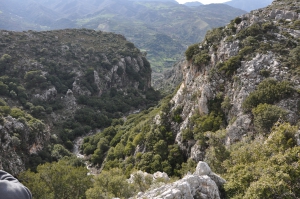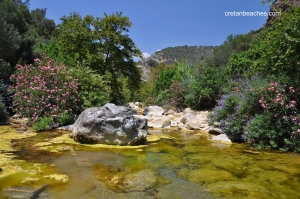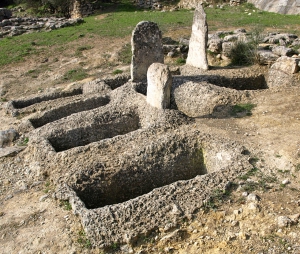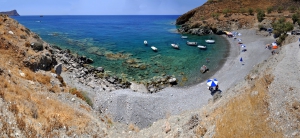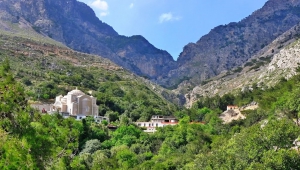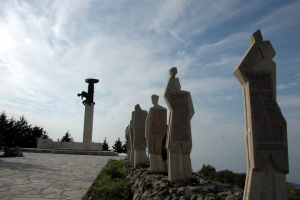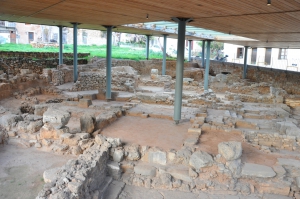1.5km east of Spili, next to the main road connecting Spili to Agia Galini, you will meet the chapel of Agia Fotini, also known as Agia Fotia. Next to the road, you will find the springs of Agia Fotia, an old mill and a quite high waterfall (in winter).
The River Platis Potamos is one of the rivers of Crete with lot of water and dense vegetation. Indeed, along the banks there are several stone bridges with arches built by the inhabitants of the area to cross the river.
The archaeological site of Fourni is located on the homonym wooded hill, 17km south of Heraklion and west of Kato Archanes. To get there (the site is not open, but you could contact the guard), you could walk along the Minoan path starting from Kato Arhanes or drive to the beautiful artificial grove of Fourni.
West of the village Ano Asites the river that initially is the gorge of Saint Haralabos and then crosses the village soon turns into a deep and spectacular gorge, the gorge of St. Anthony.
West of Lendas you'll meet the small village of Tsigounas with the small beach of Limanaki (harbor) used as a local harbour, due to its protected orientation. Tsigounas name derives from the word tsigounis (stingy) referring to a local spring with a small quantity of water.
The monastery of Agios Nikolaos (Saint Nicholas) is located just off the beautiful canyon Gafaris (or Rouvas), about 48km southwest of Heraklion and 3km north of Zaros village. It is situated at the point where in 1994 a great fire burnt much of the beautiful pine forest of the gorge.
The position of Meliana by village Amiras hosts one of the many memorials of the German atrocities experienced by the Cretans during the Second World War and a small museum next to it. This commemorated one of the most violent massacres of German Occupation in Greece, the holocaust of Viannos district.
Η μινωική Κυδωνία ήταν κτισμένη στη σημερινή περιοχή της παλιάς πόλης των Χανίων. Η Κυδωνία ήταν η τρίτη μεγαλύτερη πόλη της μινωικής Κρήτης. Ανέπτυξε ακμαία βιοτεχνία και πλούτισε μέσα από το θαλάσσιο εμπόριο, το οποίο ευνοούσε η θέση της. Μάλιστα, οι αρχαίοι συγγραφείς αναφέρουν την Κυδωνία ως τη μητέρα των Κρητικών Πόλεων.





